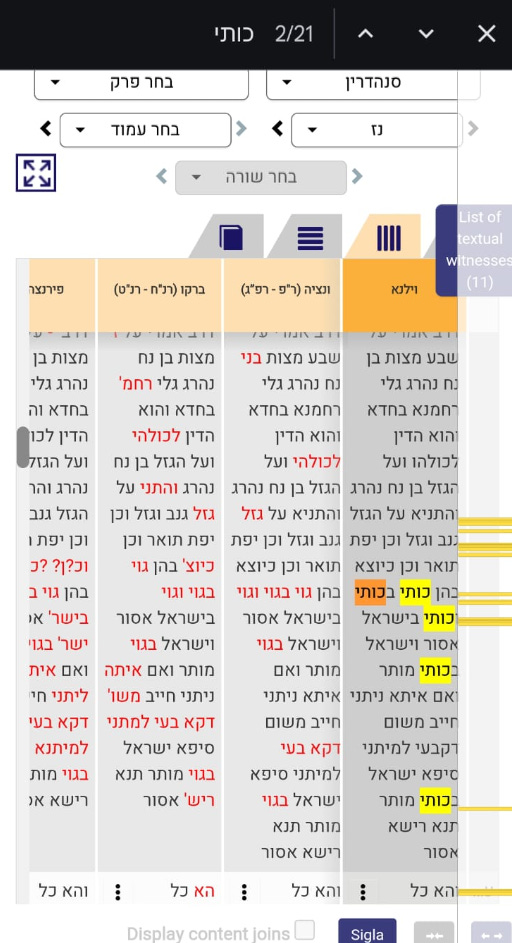In yesterday’s daf, we have a stand-in for the Divine Name in the Mishnah. Instead of, say, the name YKVK, it was Yossi Yakeh Yossi, as the purported explicit thing the blasphemer said. Or was it?
Here’s the phrase from Mishnah, Sanhedrin 56a, as per our printed texts:
בְּכׇל יוֹם דָּנִין אֶת הָעֵדִים בְּכִינּוּי, ״יַכֶּה יוֹסִי אֶת יוֹסִי״.
On every day of a blasphemer’s trial, when the judges judge the witnesses, i.e., interrogate the witnesses, they ask the witnesses to use an appellation for the name of God, so that they do not utter a curse of God’s name. Specifically, the witnesses would say: Let Yosei smite Yosei, as the name Yosei has four letters in Hebrew, as does the Tetragrammaton.
That’s Vilna, Venice, Barco. The Yad HaRav Herzog manuscript is late-ish, about the same time as Venice printing, and the errors seem to track.
But, we already see that the Florence 8-9 manuscript has Yosa, not Yossi.
Other manuscripts:
Reuchlin 2 has Yossi, but Munich 95 has Yosa.
In the vocalized Mishnah in the Kaufmann manuscript, they also spell it with a heh, but the nakdan (same person?) put the vowel point of tzeirei.
So even with the heh, that is just the consonantal spelling — it is still pronounced Yosei, not Yosa like I wrote above. Maybe.
I wonder at this spelling choice of יוסה. It is supposed to stand in for the actual Divine Name, which people nowadays mostly do not know how to pronounce, in terms of its vowels. So, I wonder if starting with a yud and ending with a heh was intended to more clearly convey that it was obliquely referring to the Divine Name which starts with a yud, ends with a heh, and has four letters. Or to suggest the vowels of Adonay (namely sheva = chataf patach, cholam, kamatz)? Alternatively, could it be an attempt to convey the vowels, with the final heh suggesting a kamatz? Could the actual vowel points / oral tradition convey the intended pronunciation?
Yad Rama discusses the different girsaot and what each may imply.
Related to the above, someone asked at the daf yomi shiur how about written testimony? Could they not have written down the Divine Name so that it was clear? But that would create a permanent record of the gidduf. Also, that there would be questions about the validity of edut mitoch haketav.
Aside from any such considerations, I’d note that the orthography of nekudot did not yet exist. Shadal discusses this at length in his Vikuach al Chochmat HaKabbalah. So, if the Divine Name were written, what if it was with entirely different vowels? That would not be the Divine Name. Only explicitly pronouncing the giduf at least once could they have the required certainty before administering capital punishment.
On a separate note, in today’s daf, Sanhedrin 57, Artscroll kept talking about Cutheans:
and even had helpful footnotes so that we can understand the meaning of Cutheans; this historical definition also would seem to expand the application to other groups of idolators.
Of course, Kuti is only present in the censored Vilna printing. All other printings and manuscripts don’t have that euphemistic descriptor. And Rav Steinsaltz’s text / Sefaria’s text go with the original as well. Probably Artscroll kept the Vilna text because that is what they regularly do, plus there are particular issues of sensitivity here.










Perhaps it isn’t a scribal error but rather someone who like R’ Yosa in the Yerushalmi is Yosa and not Yosi